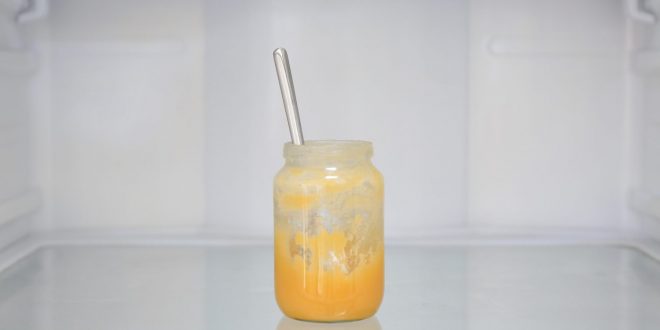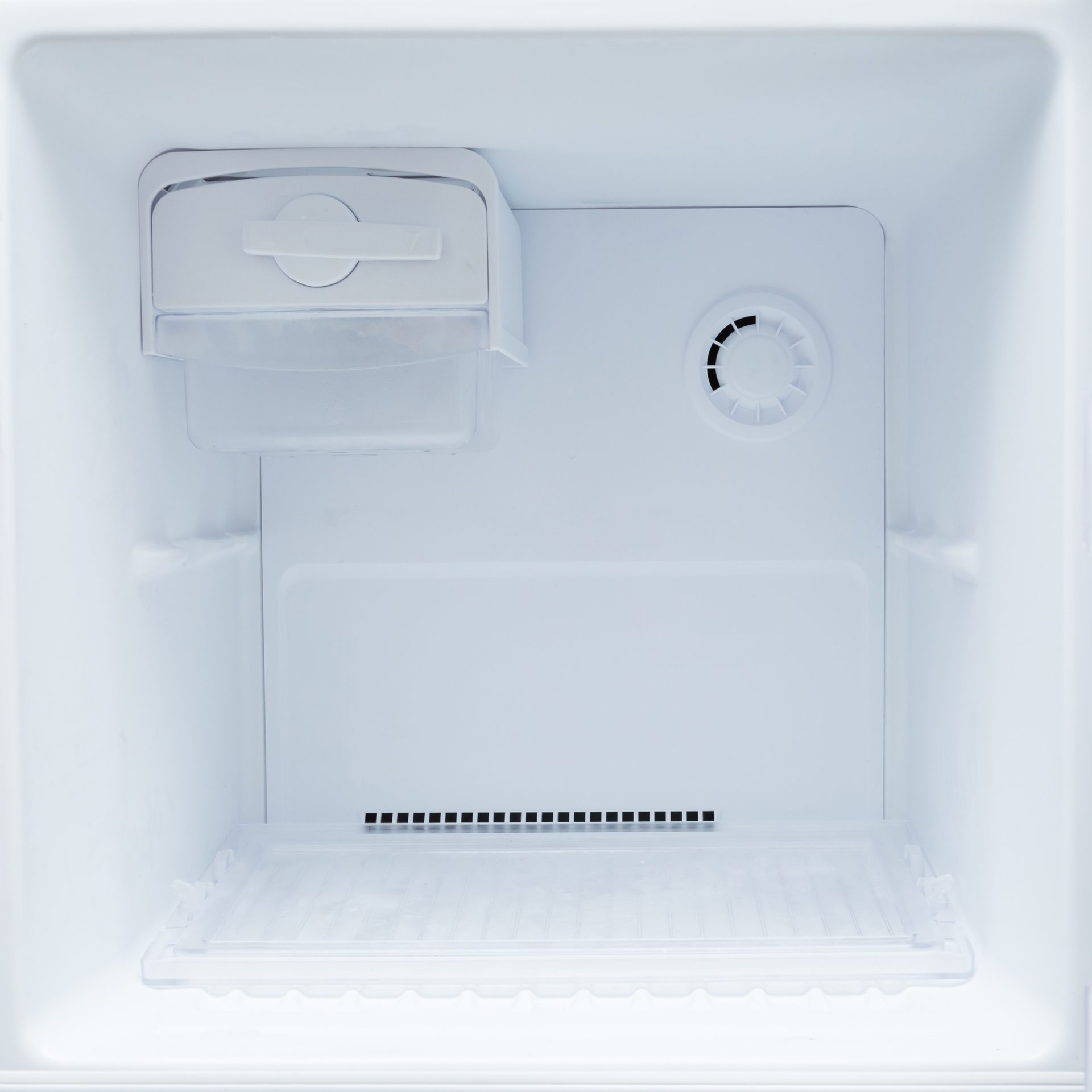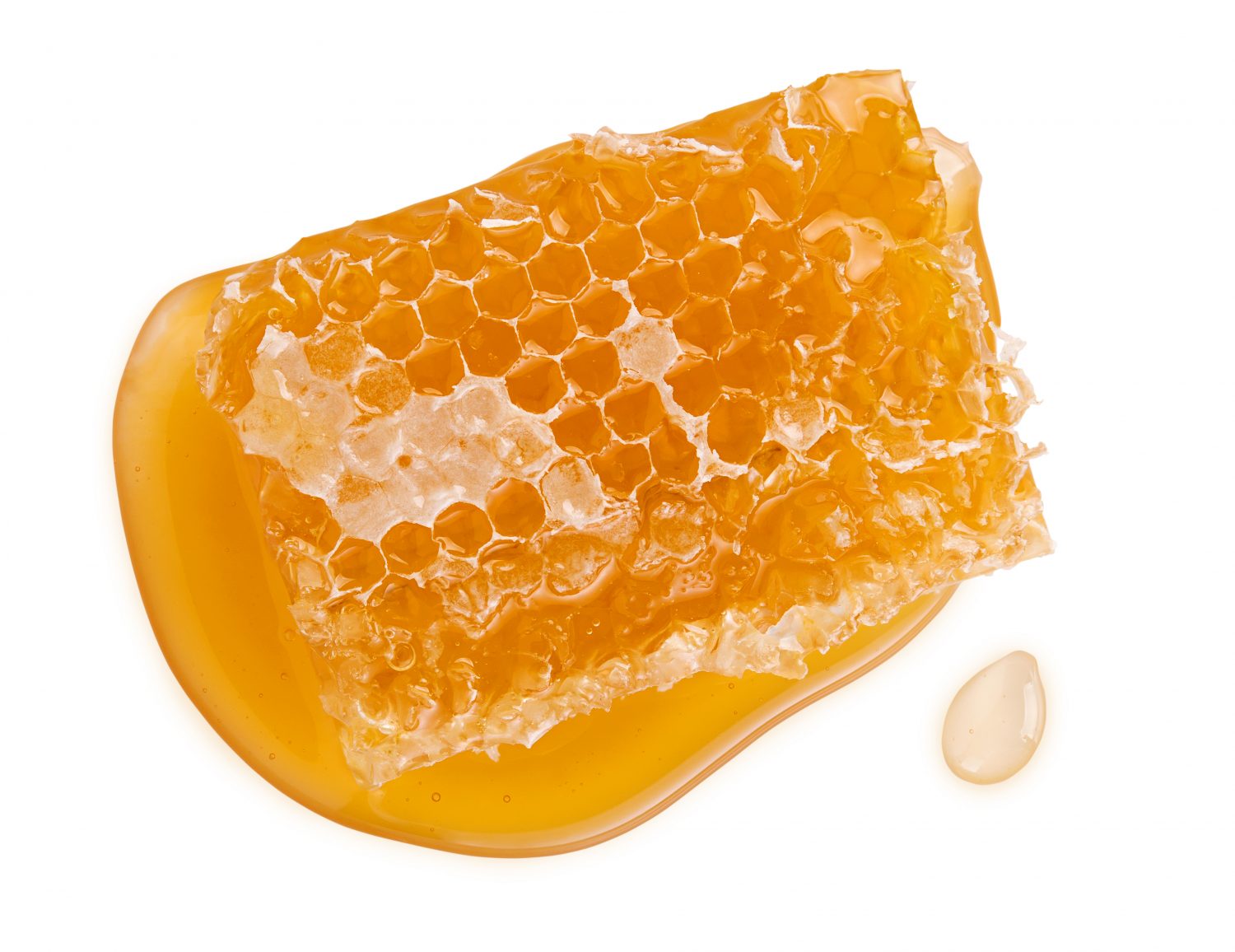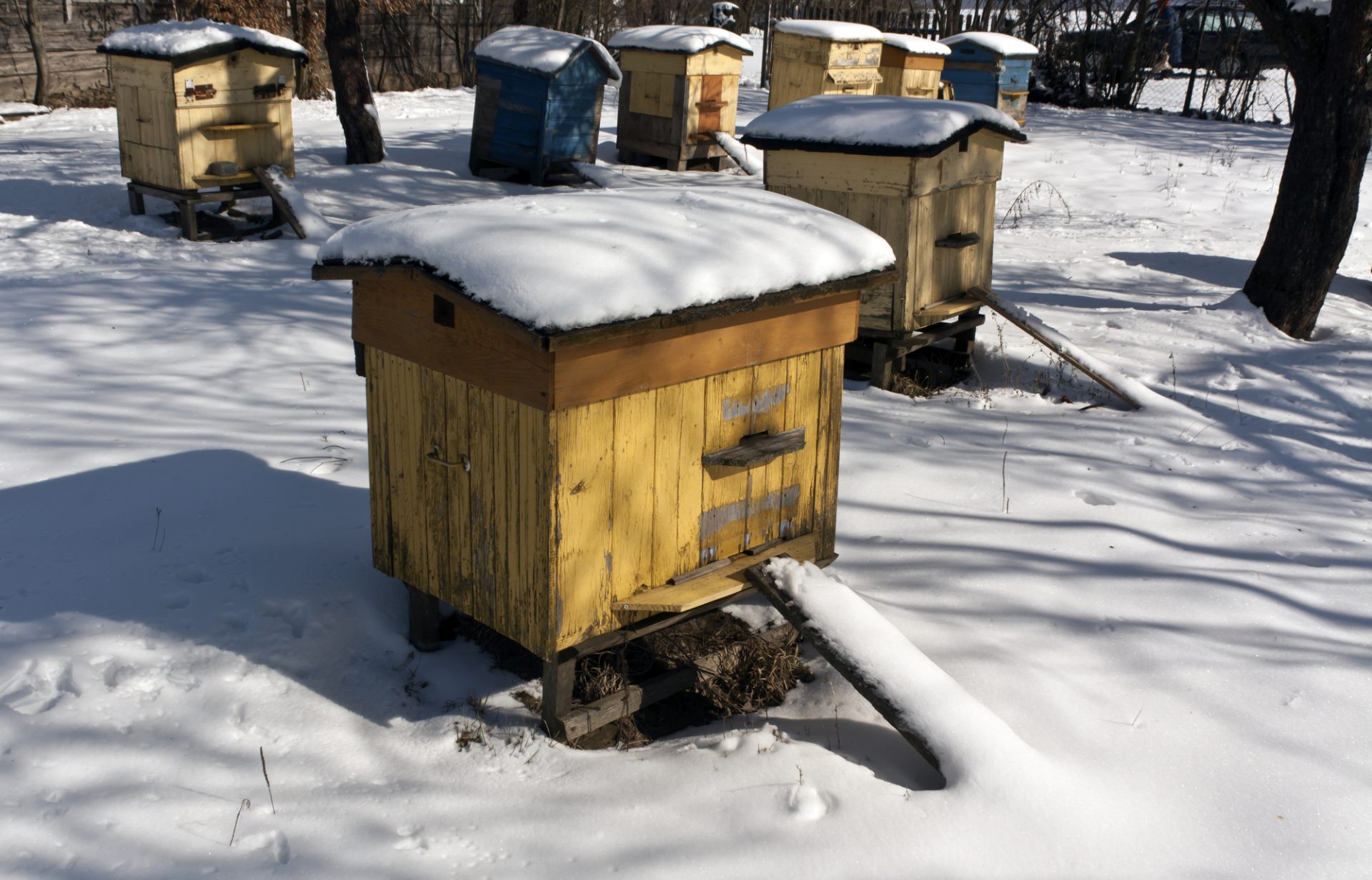If you purchase an independently reviewed item through our site, we earn an affiliate commission. Read our affiliate disclosure.
Freezing honey is one of the available methods for storing honey. Frozen honey preserves its nutritional and antimicrobial properties. Improper storage of honey may result in loss of the honey’s flavor, texture and nutritional value. Honey storage is an important part of beekeeping. Both beekeepers and consumers of honey should know how to store honey without diminishing its qualities.
Indeed, the temperature at which you store honey is very important. Cold temperatures encourages the crystallization of honey, while heat will to lead to the liquefaction of honey. The fluctuations of temperatures between hot and cold are not good for stored honey. If possible, avoid exposing stored honey to light – especially sunlight. It may damage the honey by causing useful volatile nutrients to disintegrate.
Stored honey rarely goes bad, and as long as the honey has the right moisture content, it will not ferment. Cool temperatures are great for storing honey. It crystallizes and becomes creamy. It may also become finely granulated. The honey tastes great and its nutrients are preserved. Crystallization of honey is not necessarily a bad thing. While crystallized honey may be more difficult to work with, it does not lose any of its great properties.
What is the Freezing Point of Honey?
Viscous liquids such as honey become sluggish and very thick as the temperature decreases. Honey appears solid at -200 C but still flows at a very low rate. It shows a glass transition at -420 C to -510 C. At lower temperatures, honey becomes a glassy amorphous solid that is non-crystalline.
Most freezers available to beekeepers and other honey consumers maintain a temperature of between -40 C and -200 C. Some may even reach -300 C. These temperatures are not adequate to completely freeze honey to its glass state. They are however adequate to make honey stay fresh for very long periods of time.
It is important that frozen honey does not experience large temperature fluctuations. At freezing temperatures, the water in frozen products turns into tiny ice particles. Changes in temperature cause the structure of these ice particles to change as well. The changing structure of the ice particles slowly degrades frozen products including frozen honey.
A freezer dedicated to honey only is a great way to go for professional beekeepers. The freezer should only be opened when it is very necessary to do so. You do not need special skills to freeze and thaw honey. It can be done by both beginner and experienced beekeepers. You can also do it with purchased honey from stores and other honey sellers.
Does Freezing Honey Destroy Nutrients?
Freezing honey does not destroy nutrients. You should freeze honey in a freezer with a constant temperature. Despite not losing nutrients when frozen, honey may lose other properties with improper freezing. When freezing honey, use glass containers. Plastic may allow the honey to absorb odors from nearby food items if you are using your kitchen freezer that contains other items in it.
Frozen honey can be thawed out before consumption. As the honey warms up, it becomes less viscous and easy to pour out. It also becomes more readily spreadable. You should not directly heat honey in its container. Honey that is heated by direct application of heat gets darker in color and loses its nutrients. It may also acquire a different taste. The best way to go about warming frozen honey is by placing the container of honey in warm water. Do NOT re-freeze honey that you have warmed or it will lose its nutrients and flavor.
How to Freeze Honey
- Close the honey jar or bottle completely so no air or moisture can enter the container. Moisture entering the container of honey in storage causes fermentation to occur. Additionally, air leads to oxidation of volatile components of honey if it enters your storage container. Leave a space of 1 inch to give the honey room for expansion.
- Check for spills on the honey container and clean them off. Honey freezing on the outside of the container is messy. A clean cloth dipped in warm water is great for cleaning your honey container. After cleaning it, make sure to dry off the container.
- Place your container in a freezer-safe re-sealable storage bag. This helps keep the honey from absorbing new odors from items in the freezer. The storage bag is also great to contain any mess if the stored honey leaks out.
- Put your honey in the freezer and set it to your preferred storage temperature. Frozen honey can be stored indefinitely. This makes freezing a suitable method of long-term honey storage.
Freezing Honey in Honeycomb
Beekeepers freeze honey in honeycomb for a number of reasons. The honey in un-extracted frames can be extracted later or sold in honeycomb. While freezing, the comb may be cut from the beehive frame or left on it. Do not uncap the honeycomb before freezing the honey. If you uncap, the honey will flow out before it gets completely frozen.
Honey has very little moisture content. As a result, it does not expand readily. Even when it does, the expansion is not enough to break honeycomb or damage your beehive frames. With proper handling, frozen honey in honeycomb can be thawed out with no change in its appearance or loss of quality. Just like any other frozen honey, you should not directly heat frozen honey after taking it out of the freezer.
There are two main reasons beekeepers freeze honey in honeycomb. The first and obvious reason is for preservation. The beekeeper may not wish to extract honey until an entire harvest is in. Freezing the frames brought in earlier keeps the honey intact and safe until it is time to extract it.
The second reason beekeepers freeze honey in honeycomb is to protect the honeycomb from wax moths. Freezing kills wax moth larvae and eggs on honeycomb. This is important for honey that will be sold un-extracted inside honeycomb. The honeycomb may be uncut from the frame so that the wooden beehive frame get the benefit of wax moth protection too when frozen.
How to Freeze Honey in Honeycomb
- Set your freezer temperature to the desired storage temperature for your honeycomb and frames.
- Wrap frames or honeycomb in plastic sheeting or put them in plastic bags.
- Place the frames and comb in the freezer.
Be cautious and take steps against condensation forming on frozen honeycombs containing honey. This happens when the frames are taken out of the freezer. The honeycomb becomes wet. If the honey is stored in honeycomb still attached to the frame, the frame becomes wet too and may develop mold later.
Once you take frozen honey from the freezer, make sure to allow the condensation to dry from the frame and honeycomb before further storage. Additionally, you may the comb and frame wrapped in tight plastic bags. After you remove the stored honeycomb from the freezer, allow it to reach room temperature before removing the plastic. This keeps condensation from reaching the frames and honeycomb.
Another method you may use in thawing out frozen frames with honey, is to set an empty super on the floor with a 60 watt bulb in it. Stack other super boxes with frames in them above this empty super box. The light produces heat that thaws out the frozen honey frames. A thermometer in the stack is great for checking temperature does not go beyond 270 C.
Can Honey Be Refrigerated?
Honey can be refrigerated. However, refrigerating honey is not recommended. This is because refrigerators only cool the honey. They do not freeze it. Cold temperatures lead to crystallization of honey. Refrigeration is thus likely to lead to faster crystallization of your honey. Crystallized honey is fine for consumption and use in food recipes. It is however troublesome spreading. Once honey crystallizes, it is best not to warm it up. Crystallization and warming cycles destroy the nutrients found in honey. In place of refrigeration, it is better to either freeze honey or store it at room temperature.
Why Does Honey Crystallize?
The crystallization of honey is due to the composition of honey. It is made up of sugars dissolved in little water. This is why honey is thick and viscous. The crystallization of honey occurs when some of the sugars in honey are no longer soluble in the little moisture content there is. This results in the sugars forming crystals at the bottom of the honey container.
Crystallized honey can be returned to its more fluid form by warming it. Do not add water to crystallized honey. Increasing the moisture content of honey causes it to ferment easily. To warm crystallized honey, place the honey container in warm water and stir the honey. Do not directly heat the container of honey. It is also not advised to microwave honey. Microwaving destroys nutrients in honey, leaving it as a mass of sweet sugars.
Can Honey Be Stored in Supers?
After harvesting honey, the super boxes may be removed from the beehive. Beekeepers may want to keep the honey in the super boxes if they are not going to extract it from the beehive frames. Honey stored in this way presents a number of problems. First, it attracts wax moths and other insects. Predators that feed on honey will also be attracted to the stored honey. They destroy the comb and your beehive boxes too.
Second, honey stored in super boxes may spoil due to mold formation in the super boxes. Moisture builds up in the boxes since there are no bees to keep the humidity of your boxes at optimum levels. Mildew is also a possible problem when honey is stored in beehive super boxes.
If you must store honey in beehive super boxes, make sure to keep the boxes well aerated. They should also be in a cool place, but not too cool as to cause crystallization of honey in the honeycomb. Treat the general vicinity of the beehive boxes with insect repellent. It should keep wax moths in check so they do not infest your boxes and damage honeycomb.
The location of your stored beehive boxes containing honey should also be secured to keep out larger predators of honey such as bears. Mice should also be kept out since they may want to make their nests in the relative security of the beehive boxes.
Testing Honey for Purity
Honey consumers are increasingly finding impure and adulterated honey in the market. It is important for these consumers to know if the honey they got is good for use or not. Regional laws may protect consumers by requiring honey packaging to indicate if the contents are pure honey or if other additives are present.
You should request for a tasting sample of honey before purchase. When a sample is not available, your only option is to carry out the tasting test at home. Additionally, you should examine honey for inconsistencies before buying it. Check the label on the honey bottle. While it may not give conclusive answers as to the purity of the honey, it would point you in the right direction. If there is another ingredient listed on the label in addition to honey, the honey you are about to buy is impure.
Do not worry about the color of honey, but clear honey is something you should not buy at all. Different honeybee colonies produce differently colored honey. The same colony may also have differently colored honey based on the flowers that blossomed in the honey-flow season. The color of honey ranges from tinges of yellow to dark shades of brown. Very dark brown honey may also not be very pure or nutritious. There are a number of tests you can carry out at home to determine if you have good quality honey.
These are:
- Add a spoonful of honey to water. Pure honey remains stuck to the spoon or falls to the bottom of the water container in a lump. Honey that has been mixed with sugar syrup will most likely dissolve readily in water.
- Dip a wick or cotton pad in the honey under testing and try to set fire to it. Honey that has had water added to it does not burn. If the honey burns readily, then it has no added water. If the honey burns with a cracking sound, it may have water or other substances added to it.
- Drop honey on a paper towel or blotting paper and check for absorption. Pure honey should not be absorbed into the towel or paper. If the honey was diluted with water, it is absorbed or leaves a wet mark.
These tests for honey purity are not conclusive on their own. Use two or all the tests to get a clear picture of your honey’s quality. Other tests that you may hear of are not scientifically proven. They either give you wrong results or give inconsistent results.
To get accurate results about the moisture content of honey, use a refractometer. It is not too expensive to buy especially if you are a regular consumer of honey. Most beekeepers have refractometers they use to test their honey. A refractometer gives you great results with a small sample of honey. It is consistent and easy to use.
If you are a consumer of honey and find a seller who has great honey, it is great to stick to that one seller or particular brand of honey. The tastes and color of honey change frequently depending on the flowers whose nectar bees use to make honey. Some consumers of honey want it in its honeycomb. They too should test the honey for purity.
Why Do Beekeepers Store Honey?
Beekeepers need to store excess honey from their apiaries. They may also need to keep the honey in temporary storage as they harvest honey from other beehives. When honey is being stored temporarily, it may be kept in honeycomb alongside beehive frames. For short-term storage, it is important to avoid crystallization of honey. This is especially important for when the honey has not been extracted from the honeycomb. Freezing honey is great as a short-term storage method.
It should be noted that metal containers should not be used to store honey. The metal may react with the honey and impart a metallic odor to the honey. Additionally, the honey acquires a metallic taste the longer it stays in the container.
Conclusion
When storing honey for the long-term, freezing it is great but not sustainable. Sometimes, it may be better to label your honey as a year or two old instead of incurring the cost of freezing it for long periods of time. Sealing honey in an airtight container and storing it at room temperature keeps the honey fresh for as long as you want. The extremely low moisture content of honey helps prevent microbes from growing on honey. As a result, it does not ferment or go bad.
When you cannot keep a freezer running for long but still want to freeze honey, put it in a box and store it in an outdoors location over winter. The extreme cold of winter will freeze the honey for you and save you the cost of running a freezer.
A porous clay pot is best for long-term honey storage. It allows honey to dispel oxygen from the container. The crystallization of honey in long-term storage is not an unusual occurrence. It happens even with honey that is frozen during storage. The important thing to note is that honey should not be thawed more than once. If it is in long-term storage, keep it at a constant temperature if possible and only thaw it out when it is ready to be consumed or sold.
References
- https://www.youtube.com/watch?v=LrhlegH7MH4https://helloyummy.co/frozen-honey-trend/
- https://boatbasincafe.com/can-you-freeze-honey/
- https://www.leaf.tv/articles/how-to-freeze-honey/
- https://stayhealthyhacks.com/can-you-freeze-honey/
- https://www.youtube.com/watch?v=tqYS15I_ixs
- https://beekeepingabc.com/can-you-freeze-honey/
- https://grampashoney.com/freezing-honey-guide/
- https://indianexpress.com/article/lifestyle/food-wine/tiktok-frozenhoney-safe-experts-diarrhea-headache-7437635/
Do you freeze honey as a means of storage? Let us know your thoughts in the comments below.
 BeeKeepClub Resources and Guides for Beekeepers
BeeKeepClub Resources and Guides for Beekeepers





[…] “Freezing honey is one of the available methods for storing honey. It preserves the nutritional and antimicrobial properties of honey. Improper storage of honey may result in loss of the honey’s flavour, texture and nutritional value.” Source […]
[…] Due to the dairy and honey, I don’t recommend freezing Homemade Corn Chowder as is. If you want to give it a try, make the recipe, but do not add the milk or honey just yet. (Just FYI, honey doesn’t really freeze in a home freezer). […]
[…] This helps keep the honey from absorbing new odors from items in the freezer. The storage bag is also great to contain any mess if the stored honey leaks out. Put your honey in the freezer and set it to your preferred storage temperature. Frozen honey can be stored indefinitely. via […]
[…] When freezing honey, use glass containers. Plastic may allow the honey to absorb odors from nearby food items if you are using your kitchen freezer that contains other items in it. Frozen honey can be thawed out before consumption. Do NOT re-freeze honey that you have warmed or it will lose its nutrients and flavor. via […]
[…] Freezing honey does not destroy nutrients. You should freeze honey in a freezer with a constant temperature. Despite not losing nutrients when frozen, honey may lose other properties with improper freezing. The best way to go about warming frozen honey is by placing the container of honey in warm water. via […]
[…] the colony depends on honey shops. Iciness proves to be the toughest season for bees because the freezing temperatures wipe out current plant life. The summer season bees have additionally died via this […]